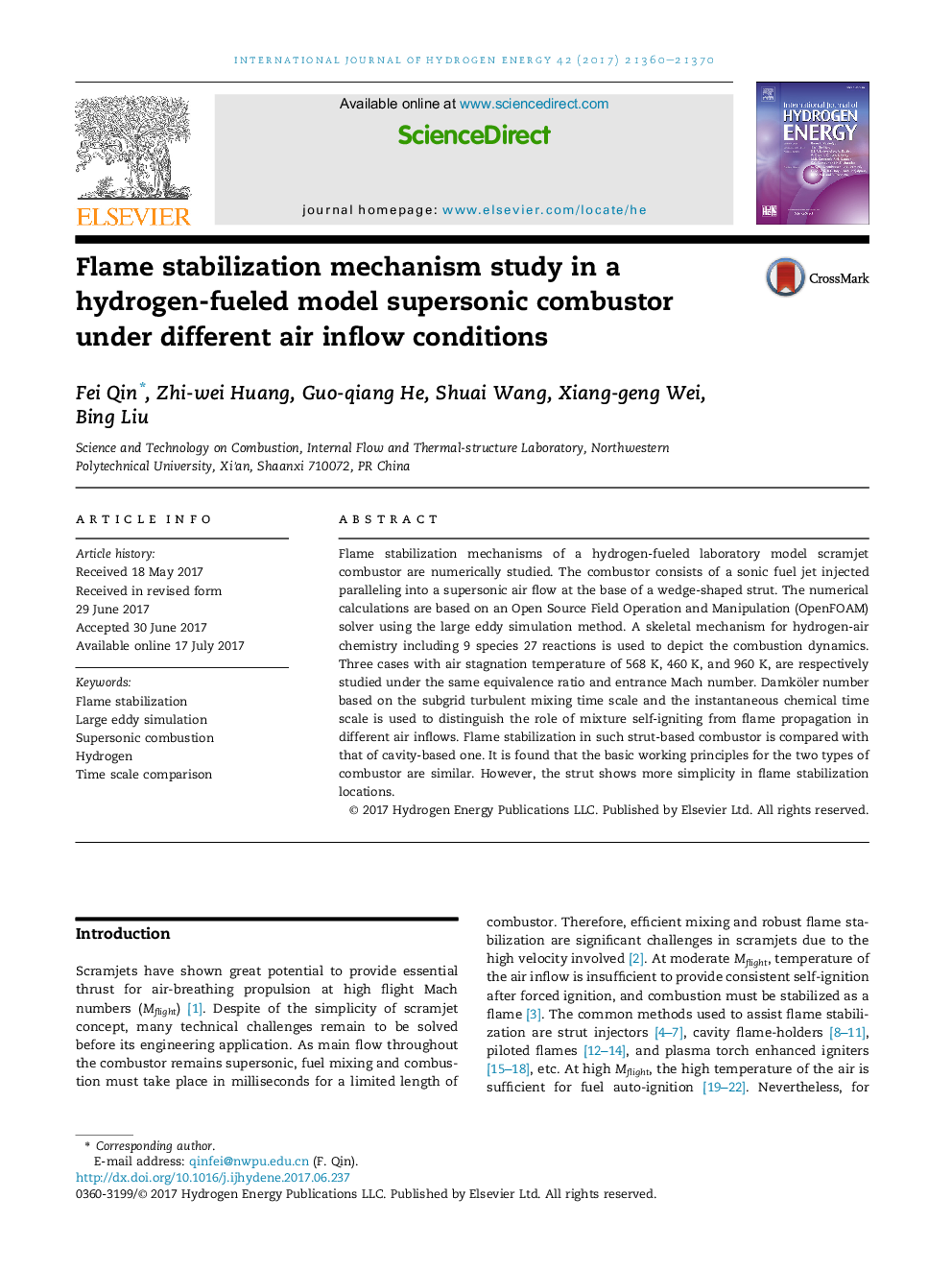| Article ID | Journal | Published Year | Pages | File Type |
|---|---|---|---|---|
| 5145990 | International Journal of Hydrogen Energy | 2017 | 11 Pages |
â¢Flame stabilization mechanisms are studied in different air inflows.â¢The roles of flame propagation and fuel self-ignition are distinguished.â¢The failure of flame stabilization under certain conditions is analyzed.â¢Flame stabilization mechanisms are compared with cavity-based combustors.
Flame stabilization mechanisms of a hydrogen-fueled laboratory model scramjet combustor are numerically studied. The combustor consists of a sonic fuel jet injected paralleling into a supersonic air flow at the base of a wedge-shaped strut. The numerical calculations are based on an Open Source Field Operation and Manipulation (OpenFOAM) solver using the large eddy simulation method. A skeletal mechanism for hydrogen-air chemistry including 9 species 27 reactions is used to depict the combustion dynamics. Three cases with air stagnation temperature of 568Â K, 460Â K, and 960Â K, are respectively studied under the same equivalence ratio and entrance Mach number. Damköler number based on the subgrid turbulent mixing time scale and the instantaneous chemical time scale is used to distinguish the role of mixture self-igniting from flame propagation in different air inflows. Flame stabilization in such strut-based combustor is compared with that of cavity-based one. It is found that the basic working principles for the two types of combustor are similar. However, the strut shows more simplicity in flame stabilization locations.
